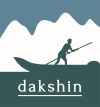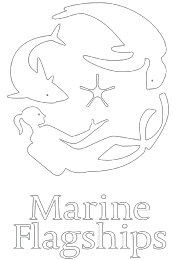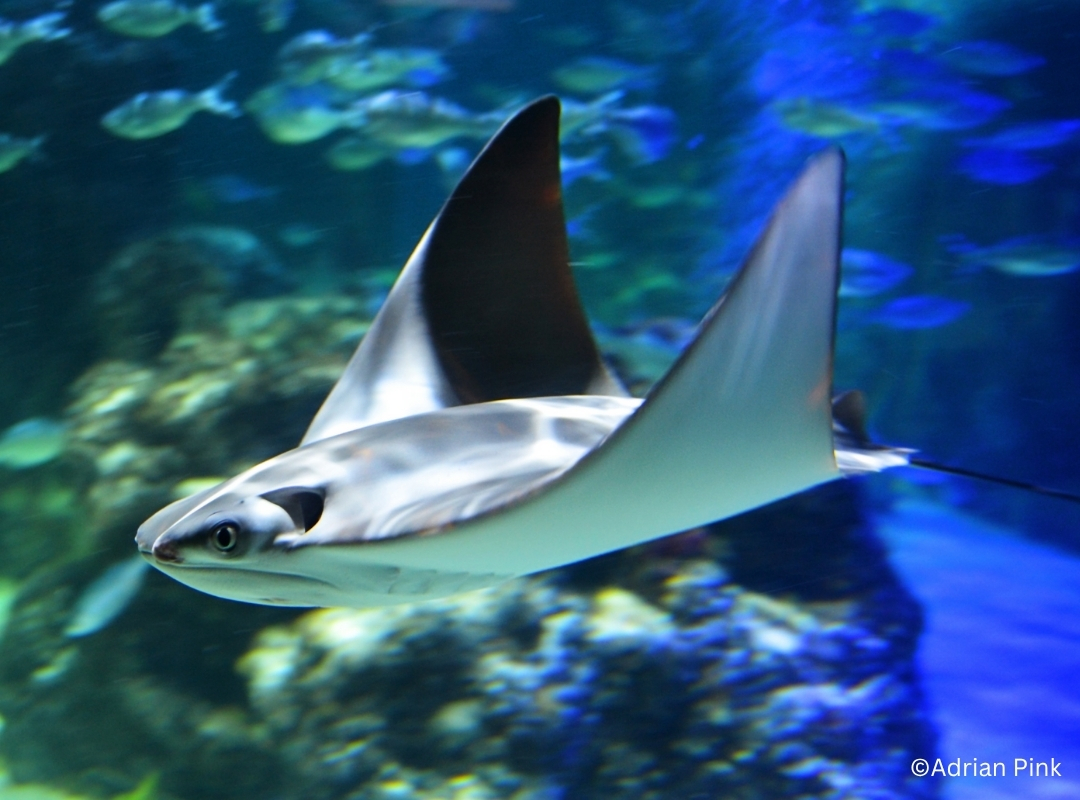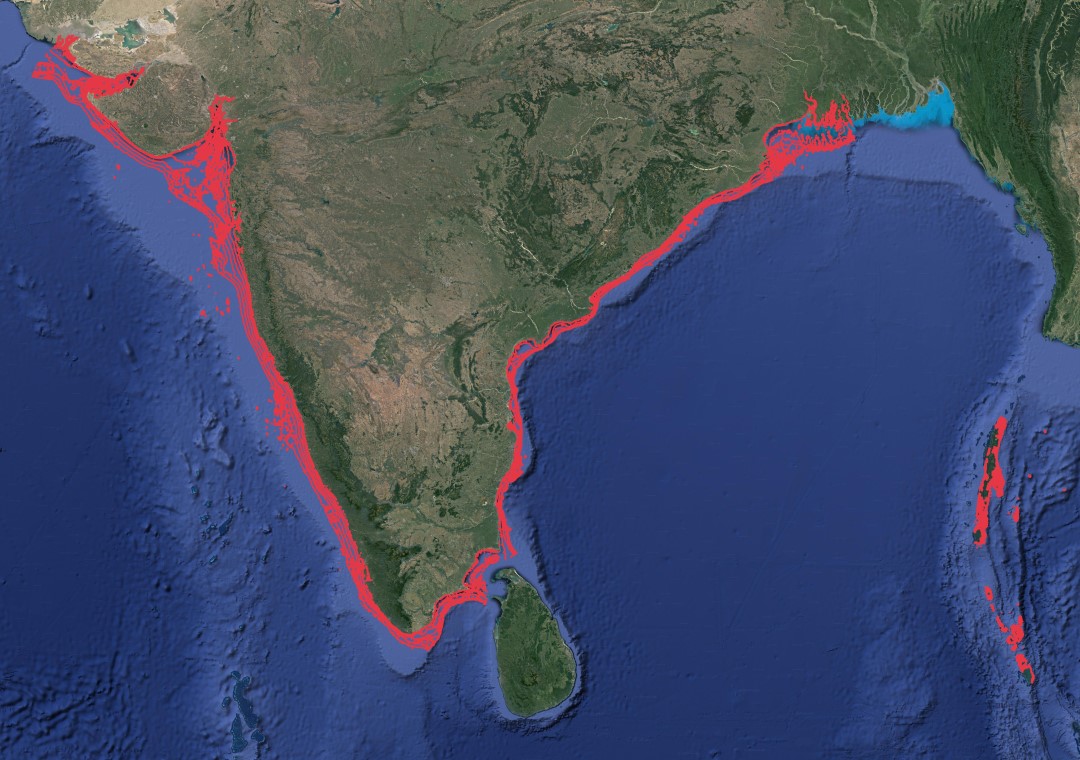Species Name
Javanese Cownose Ray
Scientific Name
Rhinoptera javanica
Family Name
Rhinopteridae
IUCN Status
Endangered
A large sized cownose ray with a broadly rhomboidal disc; snout strongly notched medially to form two lobes; eyes and spiracle laterally on head; dorsal fin prominent, posterior margin of dorsal fin strongly concave; dorsal uniform deep greyish to brown-black, white ventrally, tail base as well.
Biology
Length: It reaches a maximum size of at least 165 cm disc width (DW), males and females mature at 128 cm DW.
Gestation period: NA
Littter size: Reproduction is aplacental viviparous with litter sizes of 1–2 pups and a size-at-birth of 30 cm DW.
Life Expectancy: A generation length of 14.5 years was inferred based on age data for the Bat Ray (Myliobatis californicus), which attains a similar size (180 cm DW).
Diet: Feeds on clams, oysters and crustaceans.
Habitat and Distribution
Habitat: The Javanese Cownose Ray is benthopelagic in tropical waters from the surface to depths of 50 m.
Distribution: The Javanese Cownose Ray can be found from Oman to the Philippines and north to Japan in the Indian and Western Pacific Oceans. The species is known to congregate in big groups, which may render them vulnerable to capture.
Known landing centres: Royapuram Fishing Harbour, Cuddalore Fishing Harbour, Nagapattinam Fishing Harbour, Digha Mohana, New Ferry Wharf, Okha, Porbandar, Mangrol, Veraval, Diu and Thoothukudi.
Depth: 0-50 m.
Commercial Value
Shoals of the species have landed at various harbours in Mumbai and Gulf of Munnar. The shoal consisting of 28 individuals fetched a price of Rs. 400/ piece and the embryos also fetched a good price at Rs. 60/piece. They are sold locally, used fresh, salted, dried for human consumption and their remains are used as bait or in fish meal. The skin of whiprays is often processed and used for leather in India.
Threats
Intense fishing pressure followed by illegal, unreported and unregulated (IUU) fishing in the Indo-Pacific region with reported catch estimated to represent only 0.9-19.4% of the true catch. Adding to these threats there are other issues regarding habitat degradation, habitat destruction, industrial activities etc.
References
- Das, Thakur and Sawant, A D and Sundaram, Sujit and Katkar, B N (2006) Observations on a shoal of the Javanese Cownose Ray Rhinoptera javanica landed at New Ferry Wharf, Mumbai. Marine Fisheries Information Service, Technical and Extension Series, 189. pp. 22-23.
- James, P S B R (1962) Observations on shoals of the Javanese Cownose Ray Rhinoptera javanica Muller & Henle from the Gulf of Mannar, with additional notes on the species. Journal of the Marine Biological Association of India, 4 (2). pp. 217-223.
- James, P S B R (1971) Further observations on shoals of the Javanese cownose ray Rhinoptera javanica Muller & Henle from the Gulf of Mannar with a note on the teeth structure in the species. Journal of the Marine Biological Association of India, 12 (1&2). pp. 151-157.
- Srinivasarengan, S (1979) Occurrence of a large shoal of Javanese cownose ray, Rhinoptera javanica Muller & Henle in toe Bay of Bengal off Madras. Indian Journal of Fisheries, 26 (1&2). p. 239.



